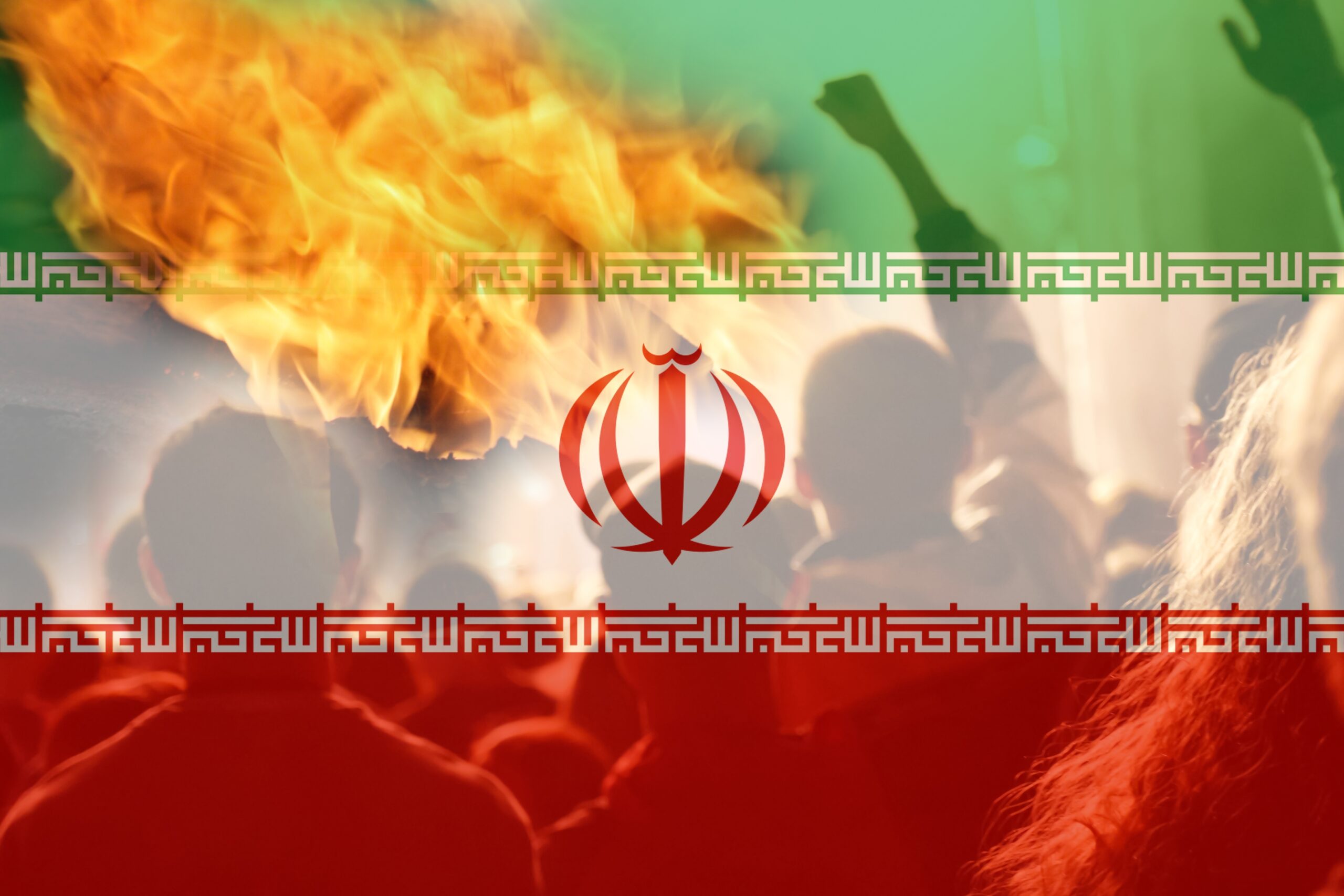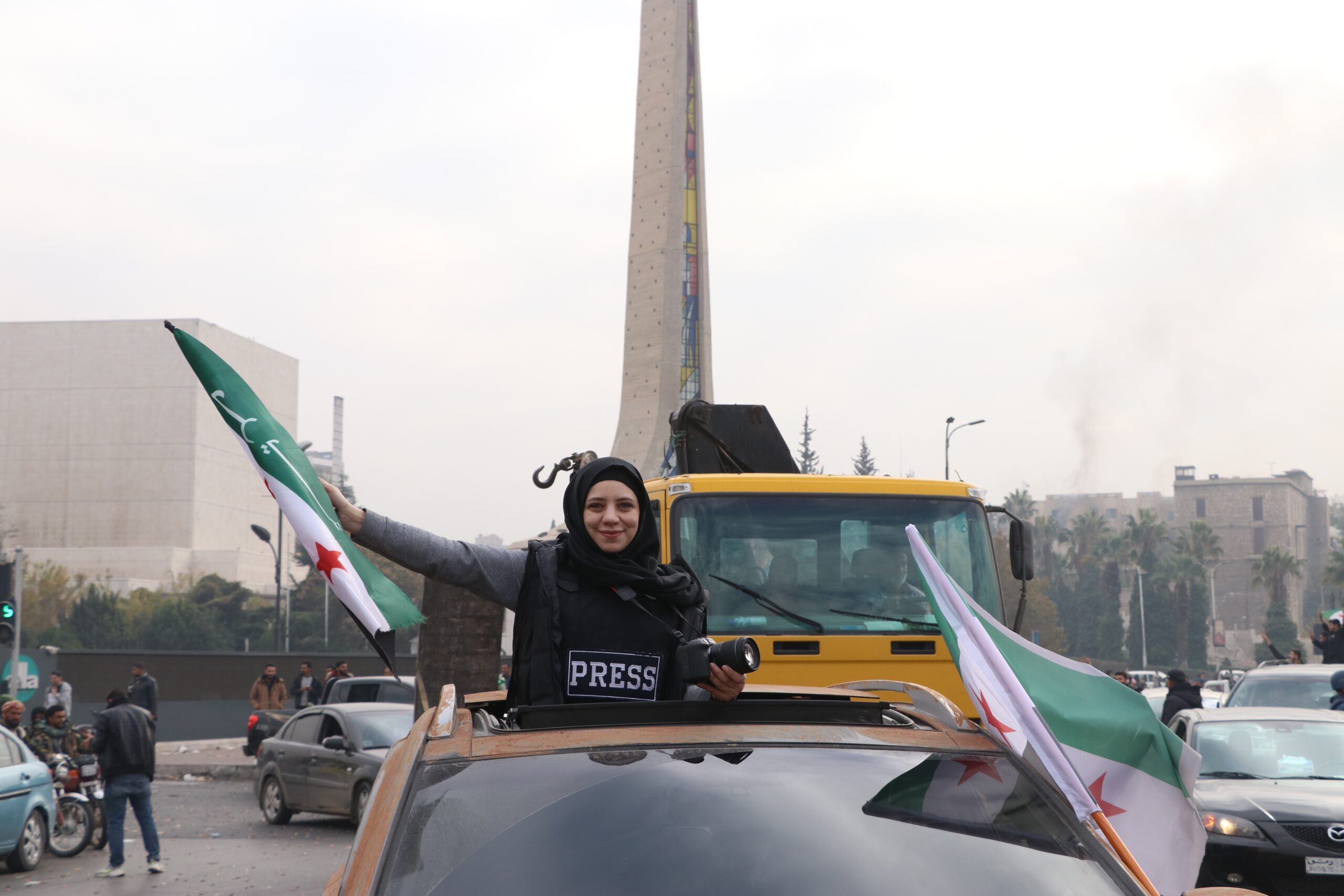|
Getting your Trinity Audio player ready...
|
The Israeli-Hamas War now entering its seventh week is quickly evolving into human warfare reduced to its primordial template: an elemental contest of wills between two combatants, in which only one combatant can claim victory and the other is likely to utterly perish.
Some wars are decided by tactical advantages obtained by one side that make a continuation of the conflict by the other side uneconomical. Other wars are decided when one side believes that it has achieved a set of pre-defined strategic objectives. Two of Israel’s prior wars against Hamas, the 2008-09 war dubbed ‘Operating Cast Lead‘ by the Israelis and 2014’s conflict dubbed ‘Operation Protective Edge’ by the same, meet the second definition.
Another type of armed conflict – typically the most painful, bloody and protracted struggles – end when the will of one side, or its ability to continue fighting, has been broken. The Second World War (1939-1945) was one such struggle. The Sri Lankan Civil War (1983-2009) was another.
In Greymantle’s view, it was clear in the immediate aftermath of Hamas’ October 7 terror attacks on Israel that this war was defined at its outset as an elemental battle of wills of the third type outlined above. The Sri Lankan Civil War is the most applicable model.
Like the conflict in Sri Lanka, the fourth Israel-Hamas War began on a ghastly note with the cruel slaughter of civilians and has quickly proceeded down a rabbit hole into darker territory still, at least as defined by civilian lives lost. At the start of last Friday’s four-day ceasefire, casualty estimates were over 1,200 dead on the Israeli side (and up to 5,400 wounded), while Hamas Health Ministry reported over 14,000 dead Palestinians and roughly double number wounded. Nearly 1.5 million Gazans have been displaced from their homes; 500,000 Israelis are also displaced.
THE ESSENCE OF THE CONFLICT
The way in which the war began defines its essence to be radically different than those of prior clashes between Israel and Hamas. The fact that Hamas militants broke nearly a decade of relative calm with an incursion that killed over one thousand Israel civilians – the worst such loss on the Israeli side since the founding of Israel in 1948 – established the current hostilities as a matter of revenge that must go well beyond re-establishing deterrence for the Israelis.
From the Israeli perspective, Israel can’t be seen to back down. The Israeli Defense Forces (IDF) can’t smash Hamas rocket launchers from above while limiting themselves to a three or four-week incursion on the Gaza Strip. They can’t take out 200-300 Hamas fighters and blow up a few tunnels.
This won’t be a repeat of Operation Cast Lead or Operation Protective Edge, both of which had limited strategic goals in response to the abduction and murder of small numbers of Israel citizens (e.g. three teenagers in 2014). The goals of the two prior operations referenced above were threefold: tit for tat attacks on Hamas in response to Hamas’ triggering open hostilities, to stop the firing of large numbers of missiles into Israel from Gaza, and the re-establishment of credible Israeli deterrence.
In the present case, credible deterrence won’t be established from the Israeli perspective until Hamas is either effectively destroyed, or its war-making capability is so degraded that it would take Hamas at least a decade to rebuild its capabilities to 2008 levels (not 2023 levels). Israel’s government has officially declared that the purpose of its military operation in Gaza is to ‘destroy Hamas’. Whether its military leaders actually believe this is an achievable objective is open to debate.
Nevertheless, it is clear that Hamas ‘threw down the gauntlet’ with its attacks of October 7, 2023, and has essentially dared the IDF to come and destroy it. The IDF and many well-informed observers surely understand that Israel is walking into a trap in Gaza. But from the Israeli perspective, the IDF has no choice but to accept the challenge and spring the trap. Any other response might, and likely would, be seen as craven weakness throughout the Middle East.
Israel, therefore, must win, and must be seen to win by the international community.
From Hamas’ perspective, the Palestinian cause is languishing, with major Arab countries such as Egypt and Saudi Arabia losing interest in Palestinian statehood. The Trump Administration’s brokering of the Abraham Accords between Israel and Bahrain, Morocco, Sudan and the United Arab Emirates in 2020 must have been seen by Hamas as the footsteps of doom for their cause. If Saudi Arabia were to follow the path of the Bahrainis and UAE, then the Palestinians would likely have to accept a very raw deal in any final negotiations with Israel over the creation of a Palestinian state. A bitter thought for Hamas!
For its part, Hamas seems to have staked everything on provoking a maximal response from Israel in the hopes that it can hold out, be it even for months, until Israel is forced to withdraw from Gaza.
If Israel withdraws from Gaza in 2024 without destroying Hamas, if the fighters can come out from their tunnels free men and fire their rifles into the air in celebration, then Hamas will have scored a huge victory in the eyes of the Arab World. The Saudi Crown Prince would be unlikely to ink a deal with Israel then, and Bahrain and the UAE might even pull out of the Abraham Accords.
Hamas, therefore, must also win, and be seen to win, by its supporters.
A conflict in which neither side an afford to back down is a true contest of wills. The question is: which side can hold out longer?
ASSESSING THE RELATIVE STRENGTHS OF EACH SIDE
Various assessments of the strengths of the Israelis versus Hamas have been circulated by the global media since October 7, so Greymantle can’t offer much in the way of new information below. However, a quick summary of the prior assessments are needed to develop our argument.
Briefly then, the Israeli Defense Forces have 169,500 active duty personnel and 465,000 reservists, some 360,000 were called back to active service on October 9.
The IDF has an annual defense budget of over $23 billion for 2023. The IDF have 2,200 modern tanks at their disposal, along with a legion of drones and more than 580 top fighter jets, including F-35 Joint Strike Fighters. The IDF also possesses excellent cyber warfare capabilities. The Mossad, Israel’s CIA, is believed to be the most effective intelligence service in the Middle East.
On the Hamas side, the Hamas organization has some 40,000 armed fighters (the official number is usually cited as ‘30,000 to 40,000 fighters’, but we’ll go with the higher end of the estimate) that are part of the Izz ad-Din al-Qassam Brigades – the official army of Hamas. Hamas is also reputed to possess as many as 20,000 rockets capable of striking Israel and Egypt, with thousands having ranges over over 200 kilometers; this means they could strike Jerusalem or Tel Aviv at will.
Hamas’ annual military budget is estimated at over $100 million, though this figure likely understates contributions made to the organization by the government of Iran and by wealthy benefactors in the Gulf Arab States. Hamas is said to possess some $500 million of economic assets both within and outside the Gaza Strip, including shipping companies and counterfeit cash fronting companies.
Most importantly for Hamas, the terror group possesses some 300 miles – some analysts believe up to 500 miles – of tunnels beneath the Gaza that house armories, warehouses, missile-building facilities, power generators, water cisterns, hospitals and command centers. The Hamas tunnel complex is a virtual underground city beneath Gaza.
The central challenges Israel faces in destroying Hamas are taking the tunnel complex, and maintaining enough international support to continue their war to its logical end.
HOW COULD HAMAS WIN THE GAZA WAR?
Hamas can win the Gaza War simply by not losing. If its top leadership are able to survive the Israeli attack, outlasting an Israeli siege on their tunnel complex, then Hamas wins.
The terror group does not have to retain much in the way of military manpower and physical assets to triumph. It could lose half of its fighters – 20,000 out of the estimated 40,000 – and still claim victory. Hamas could lose substantially all of its 20,000-strong missile arsenal and win the war. If the 50 top leaders of Hamas and even 10,000 fighters survive, meaning a 75% casualty rate, which is unthinkable for a conventional war, then Hamas still wins.
Victory for Hamas means making the Israeli siege and occupation of Gaza so painful for the Israelis that the IDF is forced to withdraw without ‘finishing the job’. That pain will be measured in Israeli lives lost, wounded and maimed soldiers, economic and financial pain for Israel’s citizens and government, and lost international prestige, including damaged, fractured or broken alliances.
For its part, Hamas has several powerful diplomatic allies and sponsors in its corner, including Iran, Russia, Qatar and, though it’s unclear how much material aid it is willing to provide, China. It’s also possible that nations such as Pakistan and Turkey could provide some support.
But how long can Hamas hold out in its tunnel complex before food, water and ammunition supplies run out and Hamas is forced to capitulate?
That’s the key question and only the leaders of Hamas know the answer. Greymantle suspects that Hamas has marshaled stories of water and food sufficient to last six months, at a minimum. It’s likely their supplies are even larger. Hamas has spent a decade preparing for this war. They will likely have war-gamed every possible contingency, every likely outcome.
Greymantles believes Hamas knew exactly what it was doing when it launched its Oct. 7 attacks on Israel. Hamas wanted the reaction from Israel that it is now receiving. The Oct. 7 attacks were not a thoughtless action, but rather planned after years of careful deliberation. Israel has walked into a trap, and the leadership of the IDF is likely aware of this fact.
Therefore, cognizant that Hamas has planned to hold out for a long siege of its tunnel complex, the IDF leadership knows that it has to take the tunnels by force in a kind of ‘tunnel hopping’ campaign. If it is unable to achieve that objective, then the IDF will have lost, and Hamas will have won.
The more than 200 Israeli hostages taken by Hamas on Oct. 7 are its insurance policy and trump card. If the IDF is coming unexpectedly close to taking the tunnel complex by storm, then the leaders of Hamas can surround themselves with the remaining hostages left alive in three or six months and threaten to kill all of them if the IDF does not withdraw. It’s a fearful possibility.
HOW COULD ISRAEL WIN THE GAZA WAR?
The odds are stacked in favor of Hamas in this fight. Hamas has deliberately stacked the deck, and also dealt out the cards. Israel, despite its overwhelming superiority in manpower and material, is at a distinct disadvantage, fighting as it is on Hamas’ home turf.
For Israel to win, it therefore must win a complete and total victory. That means the destruction of the Hamas underground fortress and tunnel network, the capturing of all of Hamas’ missiles and warmaking materials, and the liquidation of Hamas’ top leaders. The 40,000 fighters can be killed or captured. It doesn’t matter much which, as long as Hamas’ military and political leadership go down.
How can Israel achieve the victory it so badly needs?
First, Israel must stay in Gaza as long as it takes. That could mean up to one year, or perhaps longer. Israel will want to finish its military operation in two to three months, but can’t expect to do so.
Second, Israel must use its advantages in the areas of intelligence-gathering and technology to turn the tide in its favor. If it uses its technological advantage to detect, puncture, and take the tunnels, then it may stand a chance. This is going to involve some very hard decisions.
One of these might include flooding certain tunnels with various nerve agents to incapacitate the Hamas fighters, providing the IDF and ability to storm the tunnels with less loss of life. However, nerve agents could also sicken or kill the hostages, particularly young children and the elderly. It’s unlikely that the Israelis would be willing to take such extreme risks with their own civilians, but the stakes are high.
Third, Israel and its Western allies must ensure that minimal outside aid reaches Hamas. Even with backers such as Iran and Russia, Hamas must be made to feel isolated. They must be made to feel that their prospects for survival are shrinking, and they must make a deal. The aspect of psychological warfare is going to loom especially large in this conflict. The longer it continues, the more likely it is that one side or another is going to break psychologically.
Fourth and finally, Israel is going to have to win some victories on the ‘information war’ front by rallying disaffected Western and international publics to its side against Hamas. This may be the hardest battle of all for Israel to win in this struggle. The Jewish state has not felt so alone since 1948.
WHY GREYMANTLE BELIEVES ISRAEL WILL PREVAIL
Against long odds, Greymantle believes that the Israeli military action will ultimately succeed. This prediction flies in the face of the current military and information advantages enjoyed by Hamas, and the constraints imposed on Israel by terrain, time, world opinion, and Hamas’ solid fortifications.
However, this blog is dedicated to making predictions, not purely to analyzing events. We are forecasters, not pundits. We therefore take a deep breath and predict an Israeli victory.
Why? Against all odds and experts, why is Israel going to wipe Hamas off the face of the Earth?
The simple answer is: because it must.
What most outside observers of Israel fail to understand about the Jewish state is that, to Israelis, all wars are a matter of national and personal survival. Every fight is a fight for their very lives.
Given the sheer magnitude of the psychological and, indeed, spiritual blow struck by Hamas against Israel on Oct. 7, the Israelis and most Jewish communities around the world were faced with their very worst existential fears. Hamas struck Israel at a moment of maximum vulnerability, when Israel was itself standing on the precipice of a civil war that would have pitted Jews – 75% of Israel’s population – against one another for the first time since the era of the Judges. Since prior to King Saul. I am referring to the time when most of the Tribe of Benjamin was destroyed in an Old Testament civil war.
For Hamas to strike at such a moment has unleashed every specter of horror, every ghoul bent on eradicating the Jewish people from the face of the Earth. It may sound irrational, but the Israelis believe that their nation will fail and be wiped out if they do not defeat Hamas.
Wars are not always about rational things, or subscribe to rational laws.
For Israelis, 2023 has merged into 1973 (Yom Kippur War), 1943 (the Holocaust), the suicide bombing campaign Hamas conducted against Israel in the mid-1990s, the Second Intifada – all of it. From their perspective, they lose or die. They are in the same position as their enemies in Hamas. There is no distinction in their minds. They must win, or they will die.
For this reason, I believe that Israel will innovate on the fly, as it often has in the past, and find a way to drill down into the tunnels at their weak points – which will be identified ahead of time – allowing the IDF entrance and to take the tunnels by storm. The IDF is going to take a lot of casualties, but it is willing to do so in this specific instance.
The IDF, with over 300,000 reservists now called up, outnumbers the Izz ad-Din al-Qassam Brigades by a factor of 10 to 1. Even with the tactical advantages afforded by the tunnel network, the Hamas fighters will not be able to withstand that pressure. Also consider that Israel will likely be using drones and some form of robotics in its attacks in order to scope out the terrain and find booby-traps in advance. That will help the Israelis to minimize casualties to some degree.
As mentioned above, I also believe it is possible that the IDF may pump nerve agents into the tunnel network and send in its soldiers wearing gas masks and hazmat suits, particularly if it discovers that the hostages are being held in an area of the tunnels that the gas can’t reach. It’s a high-risk approach, but the IDF is going to have to take a lot of risks in order to win.
Let’s also keep in mind that Israeli Prime Minister Benjamin Netanyahu is a ruthless man who is much in his element as a Middle Eastern leader. And his back is to the wall in a number of different respects. He faces a hostile Israeli public, bitter enemies within his own government, pressure from abroad, and even significant legal problems. As the saying goes, ‘a cornered animal is most dangerous when its back is against the wall’. That’s basically Netanyahu.
SIGNS TO WATCH FOR THAT HAMAS IS STARTING TO LOSE
Greymantle would like to suggest readers scan the news for a number of signs that will suggest that Hamas is weakening and the Israeli offensive is succeeding. They follow below:
- Hamas continues to release hostages in groups of 10 or 20 until the number of hostages still in custody reaches around 80 persons. This will indicate that Hamas is focused on conserving its food supplies, and may have underestimated the supplies it would need for a long siege. If Hamas were intent on keeping all Israeli hostages, this would signal abundant resources.
- The Israelis are able to take some portions of the tunnel network before the end of December, killing of capturing 2,000 to 3,000 Hamas fighters. If numbers like these start getting mentioned in the news, particularly the European press and Al-Jazeera, then Hamas is doing badly.
- The ‘Arab Street‘ stays quiet, especially in Jordan, Saudi Arabia, Egypt, Morocco and the various Gulf Monarchies such as the Emirates. An absence of pro-Hamas and anti-Israel demonstrations in the Arab countries must be taken as an ominous sign for Hamas, because it means that so-called ‘moderate Arab countries’ such as Egypt and Saudi Arabia want Hamas to be destroyed.
- The latter groups of hostages released in December and January consistently report very low food rations delivered by their captors. Reports of scant rations in November most likely indicate a deliberate lack of care, rather than low supplies. But a prolongation of this pattern would suggest that Hamas has not sufficiently prepared for a months-long siege.
- Greymantle doesn’t read too much into reports from the first group of Israeli hostages exchanged for Palestinian prisoners that they were kept on a starvation diet, because this could indicate several other things besides low Hamas food stores. Most likely, it indicates that Hamas did not expect to take as many hostages as it did, and was unprepared to maintain them at dispersed locations while under heavy bombardment.
- Iran’s proxies in the region, particularly Hezbollah in Lebanon and the Houthi rebels in Yemen, noticeably scale back their missile exchanges with US patrol ships and Israeli artillery.
- U.S. President Joe Biden starts to appear more relaxed about the situation publicly. If he can coordinate a massive relief effort for the Palestinians in the south of Gaza will keeping up U.S. and NATO support for the offensive until the spring, he may have reason to smile.
THE ROLE OF NIHILISM IN THE FINAL END-GAME
The October 7 attacks by Hamas on Israeli civilians and scattered military outposts were well-planned and executed with a terrible, cold ferocity and inhumanity. They were part of a long-term strategic calculation by Hamas that it could outlast Israel and that the Jewish state’s days are numbered. The Hamas leadership counted on Israel’s military and political leaders being distracted with their own internal quarrels, so much so that they would not see the attack coming. They were right.
The Hamas military leadership are masters of so-called ‘asymmetric warfare’ and have been practicing it for over three decades to terrible effect. They seized control of the Gaza Strip in 2007 and have continually posed a serious threat to Israel.
Be that as it may, the October 7 attacks also carry a strong whiff of nihilistic thinking. They betray a state of mind on the part of the Hamas leadership that is not comfortable with its own future and may not believe it has a future. One Hamas spokesman mentioned shortly after the attacks that his leaders believed that ‘the world was forgetting about the Palestinian Cause”.
The depraved cruelty of the October 7 attackers betrays a similarity to the work of ISIS, the cruelty of the Assad regime, and the worst outrages of Mexican drug cartels. It is not the work of truly religious men, but of men who believe that they have nothing to cling to in this world but the outward forms and rhetoric of their ancestral religion.
Even as the attack was being planned over several years, the Saudi Crown Prince was abolishing the feared religious police and placing the desert kingdom’s Wahabi clergy firmly under his thumb, with an eye to epochal reforms. In Saudi Arabia, women are now allowed to drive cars and go outside with their faces uncovered, similar to more liberal Muslim states. In Europe, even as much as many Muslims are adhering to their religion and native Europeans fear a gradual ‘Islamization’ of the continent, many Muslims are also assimilating to European norms and manners.
In Greymantle’s view, the men of Hamas know the click is ticking against them. From a military perspective, Hamas is as strong as it has ever been, but remains outnumbered 10 to 1 by the Israelis and probably 100 to 1 in terms of total firepower.
Hence the ferocity and darkness of their assault on the Israeli kibbutzim.
The leaders of Hamas may still believe that Israel has not stomach for a long war. They probably still view the Israeli’s high value placed on their lives of their soldiers as a weakness, and don’t believe their underground fortresses can be taken without tens of thousands of casualties. But, it’s also possible that they expected Israel would not invade the Gaza at all, and instead bargain with them through their Qatari intermediaries, choosing to pay a high price for the hostages rather than fight.
The coming weeks will show whether Hamas are the ones who miscalculated. Greymantle believes the IDF will sit on top of Hamas and smoke them out of their bunkers one by one. The IDF is not going to leave anytime soon.
In three months’ time, with food supplies possibly dwindling and getting sick of drinking brackish water and instant coffee, this group of very nihilistic and desperate men may begin to lose their minds.
It is not natural for human beings to live below ground for any length of time. Finding themselves, and not the Israelis, to be the ones caught like rats in a trap, Hamas may well make a major strategic miscalculation of some kind, which their now-alert enemies won’t hesitate to exploit.
Who is to say that the leadership of Hamas won’t wind up entombed beneath the Levant like some ancient and forgotten Pharaoh, slowly suffocating as the lights dim, and then go out?
Until the next time, I remain —
Greymantle








